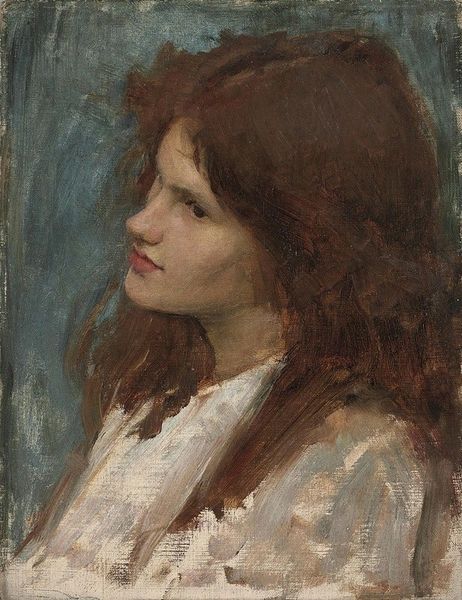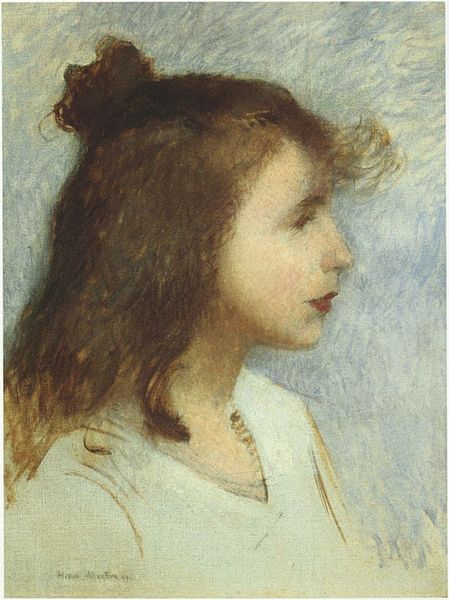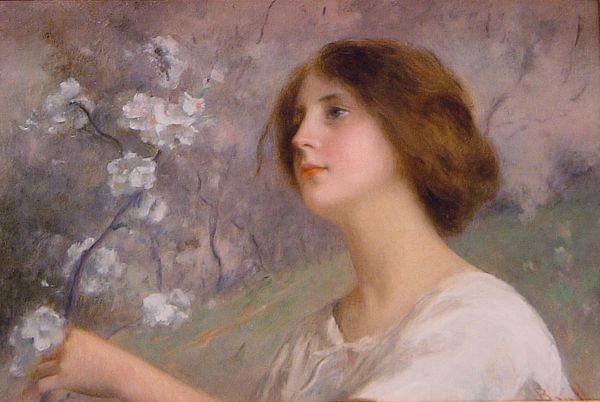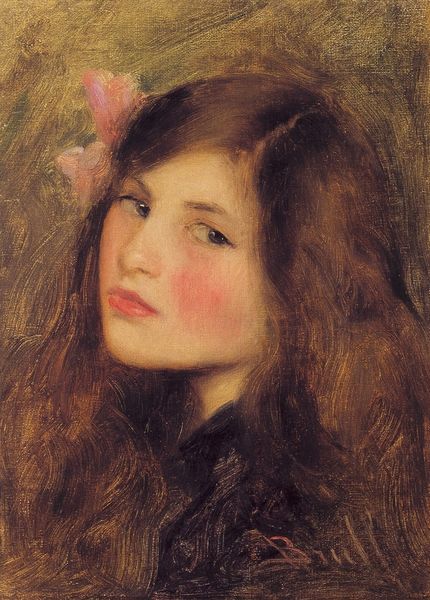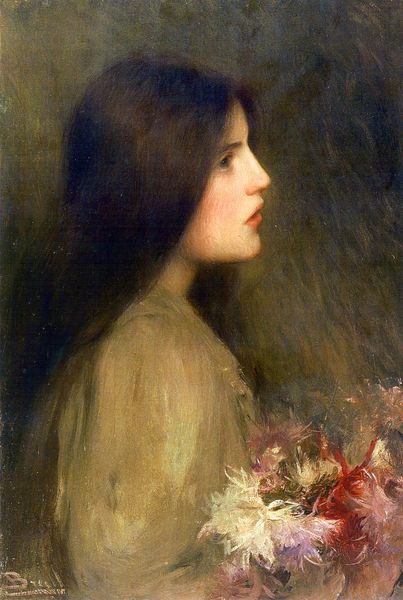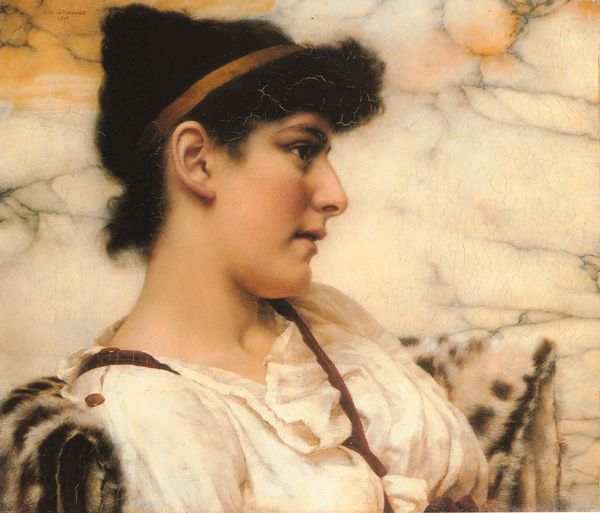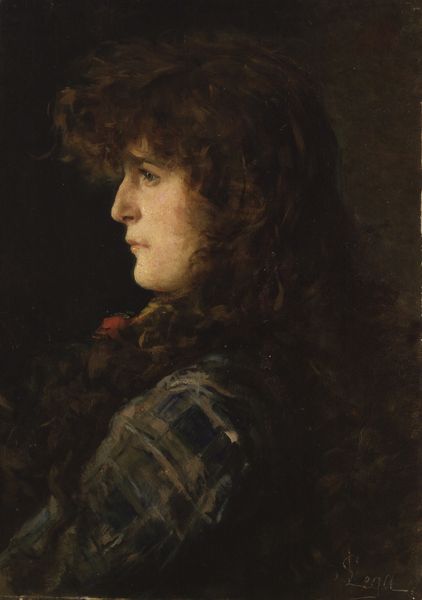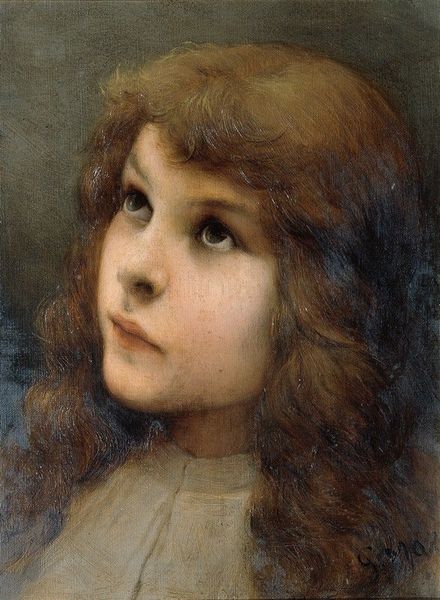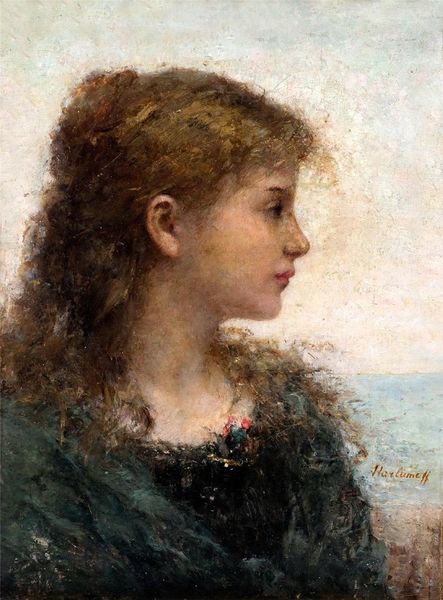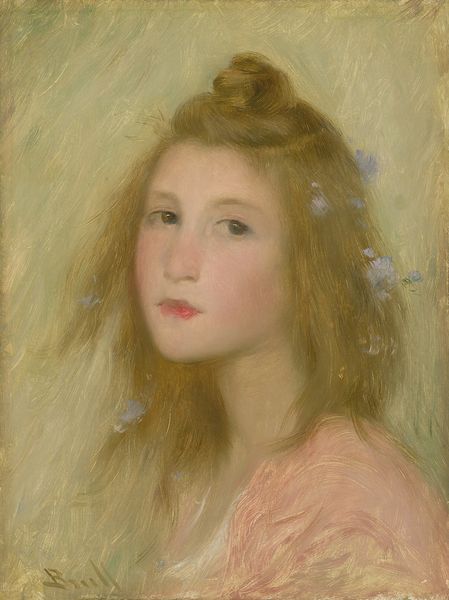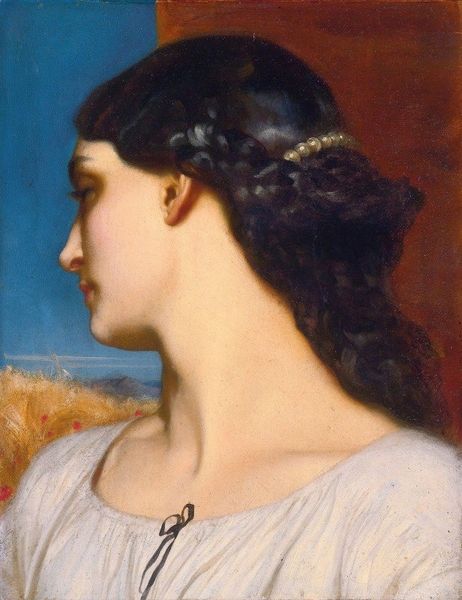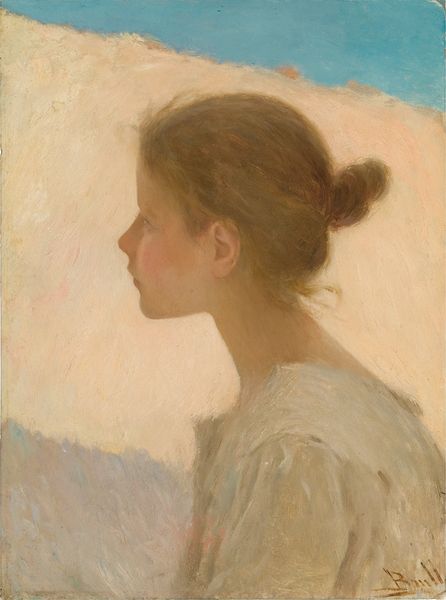
painting, oil-paint
#
portrait
#
painting
#
impressionism
#
oil-paint
#
landscape
#
oil painting
#
romanticism
Copyright: Public domain
Curator: Joan Brull gifts us with this lovely work called, "Girl by the Sea". It's oil on canvas, and evokes a dreamy seaside reverie. Editor: The first thing that strikes me is the serene, almost melancholic mood. The soft light and muted colors create a very ethereal atmosphere. It feels like a memory, something just beyond reach. Curator: It does! Brull was part of the Catalan Symbolist movement, deeply influenced by Romanticism, you see it here in his focus on evoking emotions and capturing idealized beauty, something that appealed greatly to the burgeoning bourgeois of Barcelona. He often depicted women in tranquil settings. Editor: Placing her within this aesthetic framework of feminine idealism is complicated for me. How does the romanticized view of women contribute to the societal pressures placed on them, reducing them to objects of beauty, devoid of agency and complexity? Is the work perpetuating stereotypes about female fragility and sensitivity? Curator: Well, that tension is inherent to much of Symbolist art! While one can read those potentially negative implications, the painting also provides space for quiet contemplation. The figure is solitary, absorbed in her own thoughts; not actively "performing" for anyone. She is placed within nature. Editor: True, there is a sense of introspection in her gaze. But, by presenting her in this almost passively beautiful state, are we being invited to admire her beauty above all else, essentially overlooking any internal narrative? Who is she outside this singular frame of portraiture? Curator: Her ambiguous identity is the point, I think. She’s an allegorical figure representing a broader sense of longing, perhaps a yearning for the sublime. I think, during the period when art acted in part as documentation, painting allowed people of means to construct their identities through display in portraiture. Editor: Fair point. Thinking about how the viewer might've understood her at the time, versus how a contemporary audience interprets her—there's definitely room for a nuanced reading. It challenges us to really analyze whose voices get heard and how historical representations shape our present-day perceptions. Curator: Precisely! By reflecting on these complexities, we enrich our experience with art from earlier eras, discovering so much about ourselves and the world as well. Editor: Definitely leaves us with much to ponder, the ripples from this art extend across time.
Comments
No comments
Be the first to comment and join the conversation on the ultimate creative platform.


